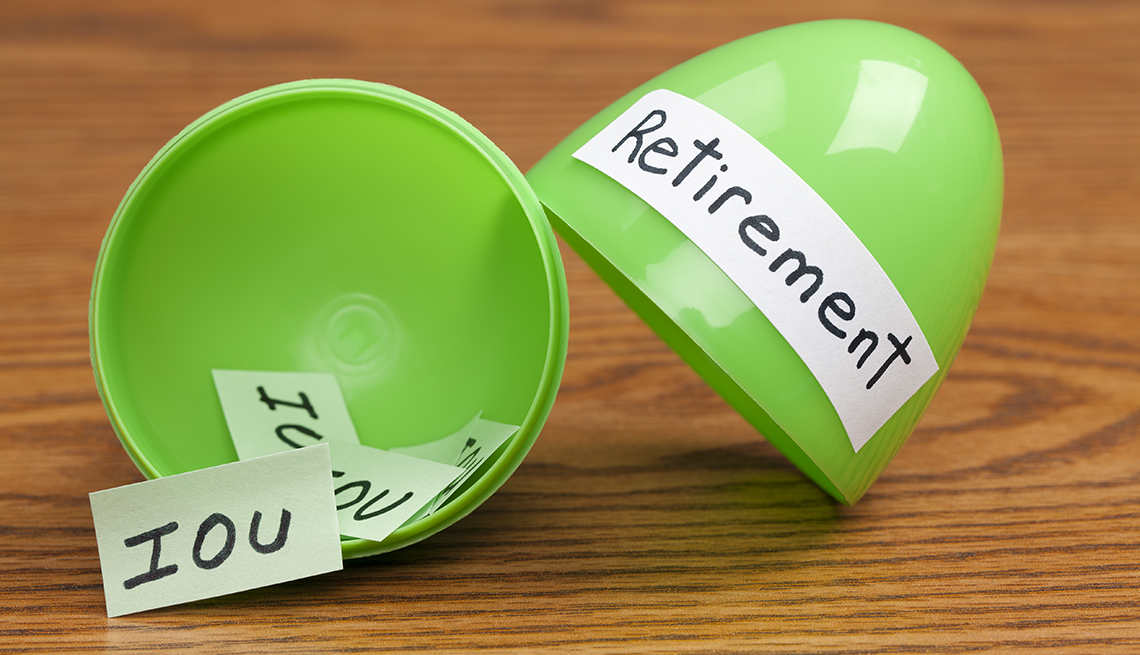How to 'Borrow' Money from Your IRA or Roth Funds During the Pandemic
Ed Slott explains an economic hardship rule that extends time to repay
Q. I need $25,000 from my Roth IRA, which has a balance of approximately $100,000. My cost basis in my Roth is $15,000.
Under the CARES Act, can I borrow the $25,000 with the same rules applying to a regular IRA and dodge the 10 percent tax penalty?
A. Technically, you can never “borrow” from your IRA or Roth IRA, but most people use the term “borrow” to mean exactly what you are asking about. That is, withdrawing funds from your Roth IRA and rolling them back over at a future date.
Ask Ed Slott
Confused about IRAs, 401(k)s, Roths, taxes and more related to saving for retirement? Ed has the answers. Email your questions to IRAHelp@aarp.org.
Normally you would have only 60 days to roll the funds back, but coronavirus-related distributions (CRDs) are exempt from this rule, thanks to the Coronavirus Aid, Relief, and Economic Security Act, or CARES Act. You have three years to return the CRD funds to your Roth IRA. You will owe tax on any taxable funds withdrawn from your Roth but the tax bill, if any, can be spread over three years. Naturally, there are a few catches.
To qualify for a CRD, you must be an affected person, which means you've been diagnosed with the virus by a test approved by the CDC, or your spouse or a dependent is diagnosed with the virus.
But even if you are not in this first “sick” category, you can also qualify if you have experienced what the law calls “adverse financial consequences” as a result of losing income due to being quarantined, furloughed or laid off. You also qualify if you've had your work hours reduced because of the disease, been unable to work due to lack of child care, or been forced to close or reduce the hours of your business because of the virus. The IRS has announced that the Treasury may cite other qualifying factors, but those have not been released yet.
Assuming you qualify to take a CRD, then you can withdraw up to $100,000 anytime in 2020 from your Roth IRA (or IRA or other company plan). The withdrawal will be exempt from the 10 percent early distribution penalty normally levied if you're under age 59 1/2.
Save 25% when you join AARP and enroll in Automatic Renewal for first year. Get instant access to discounts, programs, services, and the information you need to benefit every area of your life.
Taking distributions from a Roth
But let's get back to whether any CRD you take from your Roth will be taxable at all. First, if you are age 59 1/2 or older and have had your Roth IRA for at least five years, then all funds withdrawn from your Roth IRA, including any earnings, are “qualified distributions” and can be withdrawn tax- and penalty-free. In this case, any CRD you take from your Roth will be tax free, but you still get to withdraw it, use it for what you need, and have three years to return it to your Roth IRA, if you choose.
You state that you need to take $25,000 and have basis of $15,000. You also state that your Roth balance is around $100,000, so I am thinking that you have more basis than you think, unless you are saying you've earned $85,000 on your original $15,000 Roth IRA contributions. If that is the case, then I should be writing you for advice!
For other readers, basis means funds that have already been taxed and can be withdrawn tax-free. In a Roth IRA, basis can include both Roth IRA contributions and Roth conversions. I will assume you mean that the $15,000 you say is basis, is really the amount of Roth contributions you've made, and most of the rest might be from Roth conversions.
The way distributions from Roth IRAs work is that the first dollars out are deemed to come from Roth IRA contributions if you have made any. Your original Roth contributions can be withdrawn any time for any reason tax- and penalty-free. Once you have withdrawn all your Roth contributions, the next dollars out come from your Roth conversions. These will be tax free as well, since you paid the tax when you converted these funds. The last dollars out would be the earnings on all your Roth funds.
If you are under age 59 1/2 or have not held the Roth for five years, and assuming your first $15,000 came from Roth contributions, then those funds are tax-free coming out. But now you need another $10,000, because you said you needed $25,000 in total. If any part of those funds is also from Roth contributions, then they are tax free as well. That will likely be your case. If so, then there won't be any tax on the CRD you take from your Roth IRA.
Here's another example
Let's say again that the $15,000 is from Roth contributions. That comes out tax free. Then let's assume the next $7,000 is from Roth conversions you've done over the years. Then, that $7,000 comes out tax free too. There would be no 10 percent penalty on these funds, regardless of your age or how long ago the funds were converted, because your distribution is a CRD. That leaves $3,000 which we will assume comes from earnings. If you are under age 59 1/2, the $3,000 of earnings is taxable. But if you qualify for a CRD, then there is no 10 percent penalty for any funds withdrawn. The $3,000 taxable amount can be spread over three years. You could include $1,000 of that taxable income in 2020, 2021 and 2022, or since the taxable amount may be small and you might be in a low bracket, it might pay to include the $3,000 all in income in 2020.
If it turns out that all of the $25,000 you withdraw as a CRD from your Roth IRA is tax free, the CRD still helps you because you get three years to return the funds to your Roth, hopefully when things turn around for you. Your only loss would be the tax-free earnings you would have had if your funds stayed in the Roth. But if you need the money, using a Roth IRA gets you the CRD benefits at a low or maybe no tax cost and no penalty. Good luck.
Ed Slott, CPA, is one of the nation's top experts on retirement plans. For more than 30 years, he has educated both consumers and financial advisors on retirement tax-saving strategies. Most recently, he published Ed Slott's Retirement Decisions Guide: 2020 Edition and is the host of several popular public television specials, including his latest, Retire Safe & Secure! With Ed Slott. Visit www.IRAHelp.com to learn more.



